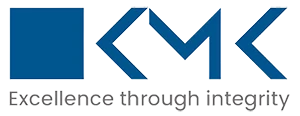Rolling Forecasts: Everything about Continuous Financial Planning

Agility has become everything in today’s fast-paced world of business. So, the time has passed for you and all future-seeing organizations when only the set-in-stone annual budget is considered. Here comes the time of rolling forecasts, a revolutionary, continuous method of financial planning that keeps the business ahead of the curve.
What Are Rolling Forecasts?
Unlike typical static forecasts, rolling forecasts, which freeze assumptions and targets for a defined period (often a year), are dynamic. They are instead updated regularly, either monthly or quarterly. The business realities, changes in the external market, and the internal performance data are again considered. Each time you add to the update, the projection window is extended, keeping your view of the next twelve, eighteen, or even twenty-four months.
Why Rolling Forecasts Matter
Rolling forecasts empower you to do the following:
- Earliest detection of trends: Recognize revenue, cost, or market changes at the moment, as opposed to months after the fact.
- Be flexible: Rather, strategy and resource changes happen fast in line with new opportunities or threats.
- Foster scenario planning: Model various “what-if” scenarios, from best to worst case, so you’re always prepared for what’s next.
- Enable collaboration: Tie in finance with operations, sales, and other divisions for a unified and continuously updated business view.
Rolling forecast goes from a “set it in, forget it” mentality to “adapt and optimize.”
Rolling Forecasts vs. Static Forecasts
Features | Rolling Forecasts | Static Forecasts |
Update Frequency | Monthly/Quarterly | One time a year |
Flexibility | High | Low |
Responsiveness | Proactive | Reactive |
Time Horizon | Always forward-looking | Fixed (ex., 12 months) |
Adaptability to Change | Excellent | Poor |
Rolling Forecasts- the most fantastic thing is that they do not keep you chained to old assumptions. In other words, when there is a sales hike or cost movement, your forecast will readjust to keep you on target.
Read Also: The Evolving Landscape of FP&A: Innovations and Future Trends
Best Practices for Rolling Forecasts Implementation
So, how do you roll out a rolling forecast? Here is how KMK Ventures will make rolling forecasts a reality:
- Stakeholder Buy-in: Ensure the value and commitment of all people to the process. Change management and clear communication are key.
- Keep It Simple: Focus on what matters most to the business–don’t get bogged down in unnecessary detail.
- Time Horizon Appropriate: Choose a window (12, 18, or 24 months) that aligns with your strategy and industry dynamics.
- Leverage Driver-Based Forecasting: Build forecasts around the variables impacting performance, like sales volume or workforce changes, not just revenue or expenses.
- Analyze Variances to Actuals: As a seed seldom sprouts and grows without some deviations, regularly check out your forecasts with and against actual results to learn and refine your models.
- Encourage cross-sectional collaboration: Involve all relevant departments to ensure comprehensive, actionable projections.
- Use Technology Wisely: Invest in forecasting tools or platforms that make data collection, scenario modeling, and analysis effortless in all departments around your organization.
Strategic Advantage of Rolling Forecasts
Rolling forecasts are more than a finance tool; they are a strategic asset. He comes into your organization and updates your view to forge a culture of flexibility and active decision-making. When times are uncertain, that could be the difference between thriving and mere survival.
They enhance strategic decision-making in an organization beyond the reactive and extremely dynamic view of business by continuously changing toward the reality in the market and internal operations.
Rolling forecasts drive better strategic decisions in the following ways:
- Increased Speed and Flexibility
Rolling forecasts allow real-time attendance to prepare updated projections of an organization’s performance. KMK Ventures is equipped to be competitive on all fronts to respond rapidly to market conditions, regulatory changes, or internal performance trends, ensuring that strategic decisions are always based on the latest data.
- Improved Risk Analysis and Management
Rolling forecasts highlight emerging risks and opportunities at an early stage by using real-time data and frequent reassessment of assumptions. This allows KMK Ventures to formulate contingency plans, reallocate resources, and counter potential threats even before they impact the bottom line.
- More Accurate, Responsive Financial Planning
Rolling forecasts increase accuracy in budgeting and resourcing allocations since they reflect the current realities obtained in business. Thus, KMK Ventures can reallocate resources, cut spending, or shift strategies when change is warranted instead of being locked into hollow decisions made months in advance.
- Better Alignment with Business Strategy
With rolling forecasts, financial planning continuously aligns with the evolving business strategy. If KMK Ventures decides to initiate growth into new areas or shift focus on higher-margin products, rolling forecasts will ensure that financial plans and resource allocations react in real-time to those strategic shifts.
- Improved Accountability and Performance Monitoring
In such a case, updating forecasts regularly and comparing these with the actual outcomes shows an accountability culture. It identifies performance gaps or variances quickly. Thus, prompting corrective actions would strengthen continuous improvement across departments.
- Data-Driven Investor and Stakeholder Communication
With current forecasts, preparing meetings with investors or stakeholders becomes easy. KMK Ventures can, with minimum effort, confidently speak to outside audiences based on the last performance metrics, along with a strategic outlook.
- Scenario Planning and Decision Support
Rolling forecasts allow scenario analysis, such as modeling best-case, worst-case, and most likely outcomes. This enables the leadership of KMK to make critical decisions under uncertain conditions, shape the forecast, and stress-test strategies before they go live.
At KMK Ventures, we’re embracing rolling forecasts to drive smarter, faster, and more confident decisions—empowering our teams to seize opportunities and navigate challenges with clarity and control. Ready to move beyond static budgets? Let’s roll into the future together—one forecast at a time.
 Chandni Lakdawala is a chartered accountant with an MBA in business management. With six years of experience in accounting, taxation, and auditing, she currently works at KMK Ventures, a company that provides outsourcing services to businesses in the USA. At KMK Ventures, Chandni helps U.S.-based companies manage their financial records, ensuring accuracy and compliance with financial regulations. Her role involves overseeing accounting processes and providing insights to support business decisions. Chandni is committed to delivering high-quality financial services and continuously seeks ways to improve processes for the benefit of her clients.
Chandni Lakdawala is a chartered accountant with an MBA in business management. With six years of experience in accounting, taxation, and auditing, she currently works at KMK Ventures, a company that provides outsourcing services to businesses in the USA. At KMK Ventures, Chandni helps U.S.-based companies manage their financial records, ensuring accuracy and compliance with financial regulations. Her role involves overseeing accounting processes and providing insights to support business decisions. Chandni is committed to delivering high-quality financial services and continuously seeks ways to improve processes for the benefit of her clients.
Let’s Take Our Conversation Ahead
KMK is a top outsourced accounting and tax service provider. We offer end-to-end accounting and tax services for small to mid-sized businesses, with a team of 875+ professionals, including certified public, chartered, and staff accountants.
USA:
651 N Broad St Suite 205, Middletown, DE 19709, USA
Phone: 310-362-2511
India:
300, Sankalp Square-3B
Sindhu Bhavan Marg,
Ahmedabad, Gujarat 380058
For Career: 91-98240-42996
Developed by Bluele | Copyright © 2025 | KMK Ventures Private Limited. | All Rights Reserved


